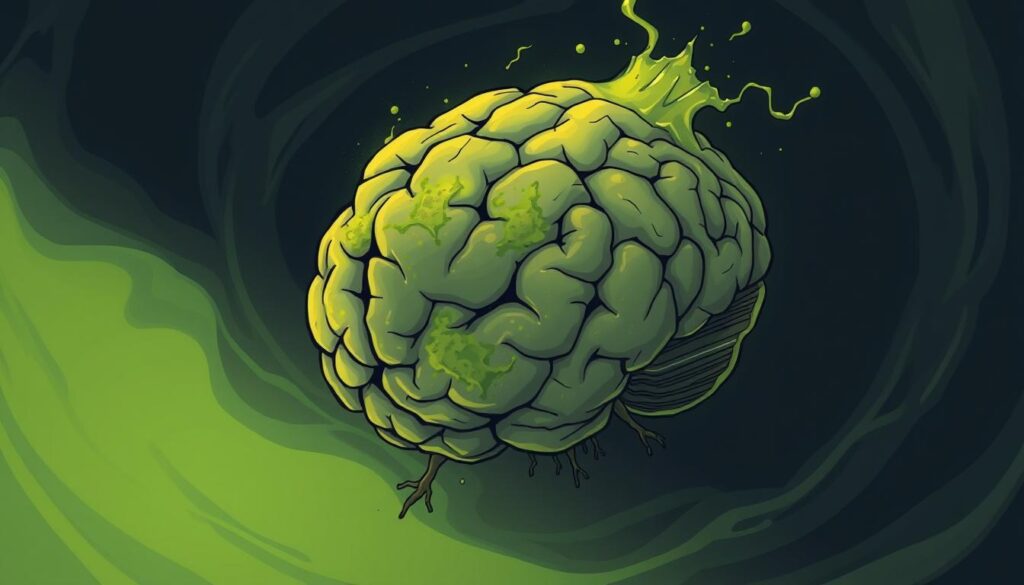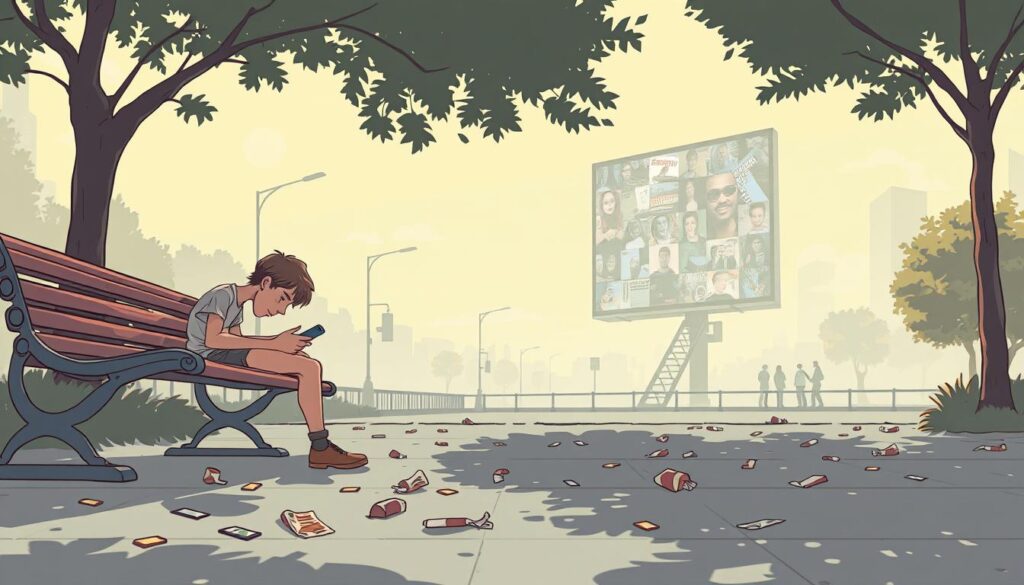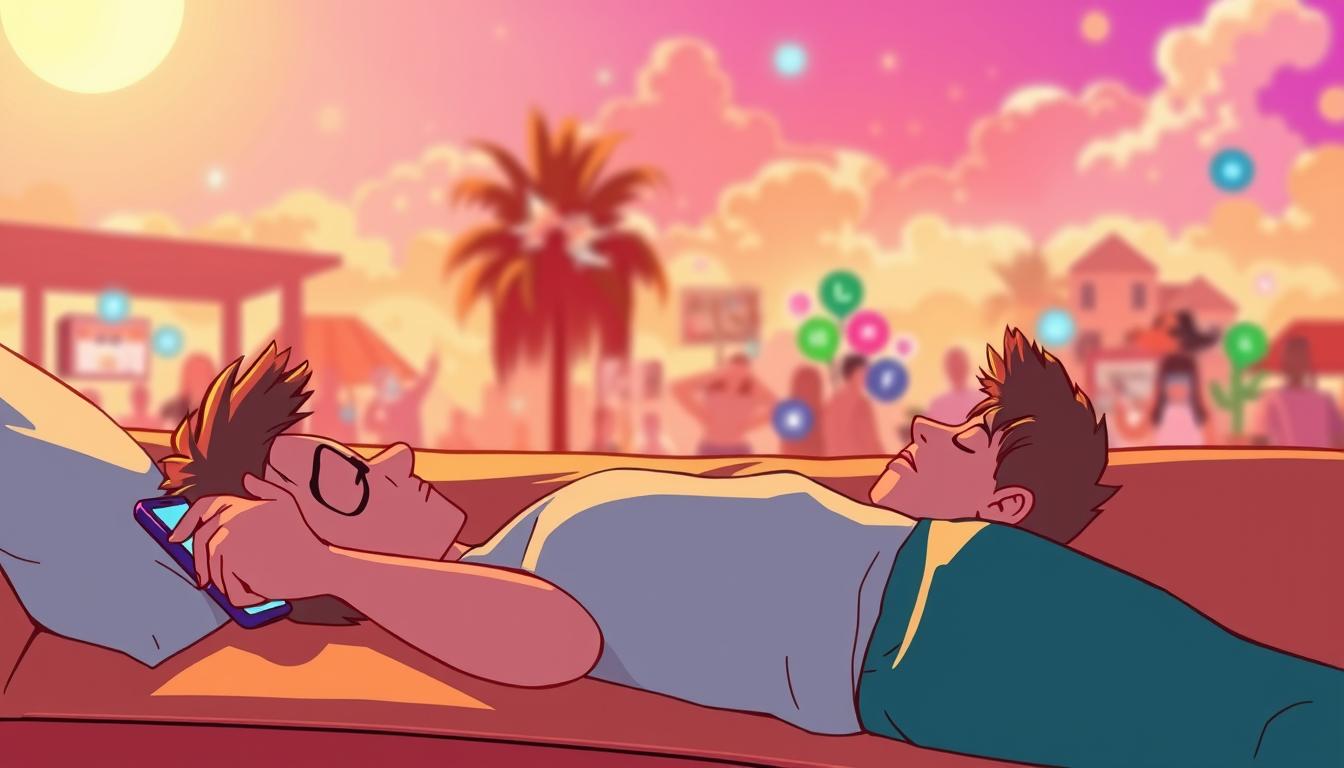The "Brain Rot Summer" of 2024 marked a pivot point where algorithmic fatigue and fragmented attention killed traditional virality. As users embraced digital minimalism and sought "third places" for connection, the creator economy downturn forced a shift. The new model replaces fleeting viral spikes with niche community growth, slow content, and offline engagement.
Did you know Oxford named “brain rot” its 2024 Word of the Year, even as ticketed talks sell out in minutes? That contrast sets the scene: people are craving depth—often attempting a dopamine detox—while feeds feel quieter than usual. This moment matters to you if your business or content depends on attention.
We’ll unpack why trends and news no longer spread the way they used to. Platform fatigue, algorithmic fatigue, fractured media habits, and shifting social media norms changed the virality playbook.
You’ll see how people are reclaiming attention — delaying phone use, using physical books, and joining in-person learning. These shifts reshape culture and business strategies for the rest of the year.
Key Takeaways
- Attention has changed: shorter bursts and fewer universal memes mean relevance wins.
- Offline learning is rising: ticketed events and seminars point to deeper engagement.
- Small routine shifts matter: simple habits can protect your audience’s focus.
- Adjust, don’t wait: rethink cadence and value instead of chasing viral luck.
- Track the right signals: engagement quality, not just reach, predicts durable growth.
Defining the Brain-rot summer and the slowdown of virality
In 2024 a new shorthand captured a widespread frustration with short, shallow content and frayed attention. Oxford’s choice reflected a moment when many people named the quality gap between quick hits and meaningful learning.
What the term meant in 2024
The term described a fatigued attention state driven by nonstop feeds, low-friction videos, and a screen-by-default routine.
Morning phone checks now often jump-start stress and reduce creative output. Lectures on Tap and independent courses showed people wanted depth again.
Why the viral engine stalled
Platform fatigue and splintered micro-communities made the same clips feel stale faster.
News cycles compressed into hours, so a post has less time to build momentum before the feed moves on.
How seasonality changed trend lifespans
In looser months people travel and schedules shift. That shortens trend windows and makes evening peaks unpredictable.
Plan for formats that respect time—brief clear value or opt-in longer pieces—and you’ll fit your audience’s day.
- Practical: fewer, better touchpoints beat viral chasing.
- Timing: protect morning blocks; they shape the rest of the day.
- Format: under 30–60 seconds or save-for-later long-form works best.
| Driver | Effect on Attention | Content Action |
|---|---|---|
| Platform fatigue | Lower novelty response | Create fewer, richer posts |
| Compressed news | Shorter momentum | Time releases to audience schedule |
| Seasonal routine shifts | Unpredictable peaks | Favor opt-in formats and saves |
| Screen reflex | Reduced recall | Design clear, memorable hooks |
Want a concise primer for your team? See a relatable write-up on this shift in language and feeling in a short piece about the brain-rot moment.
Attention under pressure: how brain rot feels in daily life

You might notice your first minutes awake feel scattered, as if your brain never got a warm-up. That quick shift from calm wakefulness (alpha waves) to alert task mode (beta) can make the whole day feel rushed.
Many people reported that delaying screens 20–30 minutes after waking improved calm. Swapping your phone alarm for a physical clock lowers the urge to open notifications at once.
From alpha to beta: the jarring morning jump
Skipping the in-between time taxes your nervous system. You may feel like your attention fragments before you even start work.
Routines that reduced rot
Small habits gave back minutes and focus to life and work. People used app limits and resisted “remind me” prompts to break automatic scrolling. These habits align with the principles of digital minimalism—stripping away digital noise to focus on what matters.
- Delay screens: 20–30 minutes of calm before checking your phone.
- Use a real alarm: the first touch should not be a screen.
- Batch checks: set two or three windows for messages to protect deep work.
- Bring analog back: physical books and a digicam keep you present at events.
Last summer some people slipped into longer scroll sessions, other days they forgot their phone. Track your feeling before and after these changes to see what truly helps your team focus.
Counter-trend culture: learning communities, books, and analog media rose as screens lost their grip

Packed talks and repeat study groups began to replace passive scrolling for many adults. These scenes felt like a friendly reboot of communal learning. You could meet a professor or an expert over drinks and leave with a new question, not just a clip.
Lectures as nightlife
Lectures on Tap turned 45-minute expert talks into an evening ritual. Topics sold out in minutes and then in other cities. The format proved a repeatable model: short, social, and sharply curated. Bars and cafes transformed into intellectual third places, offering a physical space for connection outside of work and home.
From canceled classes to Substack syllabi
When a school canceled a class, an independent Substack course filled the gap fast. Karen Attiah’s freeform version drew hundreds, then thousands on waitlists. That demand shows people want flexible access and sliding-scale options.
Back to books, film, and photos
Curated “terms” like Lit Girl’s pair classics with modern movies and albums. Readers chose physical books again. Small digicams and deliberate film nights made stories feel richer and slower.
Why it resonated
Adults said being years removed from school freed them to ask honest questions. Structure plus friends lowered the barrier to start. The result was stronger networks and habits that brands can learn from.
| Pattern | What worked | How you can copy it |
|---|---|---|
| Short expert talks | High sellout rates, social vibe | Run 45-minute sessions in casual spaces |
| Independent courses | Wide reach, sliding-scale appeal | Host multi-week series with pay-what-you-can tiers |
| Curated syllabi | Mix of books, film, and music | Create a themed “term” with clear readings and watch lists |
| Analog media | Longer attention, richer memory | Encourage books, film nights, and photo prompts |
What the Brain-rot summer meant for social media, creators, and business

Creators and brands had to trade viral gambling for steady rituals that actually held attention. The rot in short attention spans made spikes rarer. This stagnation contributed to a broader creator economy downturn, where chasing views became less sustainable than building loyalty. That pushed smart teams to design for months and years, not just an afternoon of clicks.
Here’s the way to rework your content and community playbook so you earn durable engagement.
Implications for content and communities: fewer viral spikes, more durable niches and schedules
Expect fewer viral spikes in this brain rot summer. Plan for slower compounding gains and build pillars that run long. Instead of broad reach, the focus shifted to niche community growth where engagement runs deeper.
- Make a schedule: publish a realistic cadence people can plan around.
- Favor series: shift your media mix toward sequenced content and clear dates.
- Own a niche: teach a specific skill or solve a problem—depth wins over breadth.
- Enable return visits: host Q&As, office hours, and challenges to create two-way learning.
- Diversify distribution: repurpose the same idea across short clips, long posts, email, audio, and a guide.
- Measure value per minute: every post should clarify, teach, or inspire action.
- Bundle offers: attach workshops, templates, or mini-courses to product sales for steady revenue.
When social media and wider media feel fickle, you win by becoming predictable and useful. That way, people choose your schedule and keep returning, even as trends shift.
Conclusion
To finish, let’s turn what we learned into clear moves you can try this year.
Protect the first minutes of your day. Delay screens for 20–30 minutes. That small change helps your brain ease into work and life.
Pair quick touchpoints with deeper options. Offer short clips plus curated lists of books, movies, or photos and a monthly session. People return for clarity and cadence.
Measure what matters: track saves, replies, sign-ups, and attendance more than raw views. Over months and years, steady communities beat single viral hits.
Use a few simple habits and a reliable schedule. Show up on time, teach clearly, and respect the time people give you. That’s the way forward in noisy media and fast news cycles.
FAQ
What does “brain rot” refer to in the context of 2024 media culture?
The term described a collective feeling of mental fatigue from constant short-form content, rapid trends, and fragmented attention. It captured how people felt mentally exhausted, less focused, and less likely to latch onto a single viral moment.
Why did virality slow down during that period?
Several forces converged: platform fatigue from users and creators, more fragmented audiences across apps, faster trend turnover, and shorter news cycles. These factors reduced the odds of a single piece of content reaching mass attention.
How did seasonality and time off affect attention and trends?
When routines change—longer daylight, travel, and relaxed schedules—people spend attention differently. That shift shortened trend lifespans and lowered engagement peaks, making sustained virality rarer during those months.
What did the “jarring morning jump” mean for daily focus?
It described the abrupt move from sleep to immediate screen use—checking feeds and notifications first thing. That habit worsened cognitive load, fragmented attention, and reduced the quality of focus for the rest of the day.
Which routines helped reduce mental fatigue and reclaim attention?
Simple habits worked best: delaying phone use after waking, setting screen-time limits, batching notification checks, and carving short analog breaks like reading or walking. Those moves recovered minutes that add up to better concentration.
How did counter-trend culture respond to the slowdown of viral content?
People and creators shifted toward slower, community-centered formats: local lectures, paid small-group classes, Substack courses, and tangible media like books and film. These formats offered deeper engagement and predictable schedules.
Why did in-person talks and learning nights become popular?
Shared learning events recreated social rhythm and accountability that feeds couldn’t. Bars, co-working spaces, and community venues provided immediacy and connection, making learning social and enjoyable again.
What role did independent courses and newsletters play?
Independent courses and newsletters offered curated, on-demand learning without platform noise. They allowed creators to set coherent syllabi, offer sliding-scale access, and build durable relationships with niche communities.
How did a return to physical media affect creators and audiences?
Tangible media—printed books, film photography, zines—slowed consumption and increased perceived value. Creators found an audience that appreciated craft, while consumers enjoyed longer-lasting engagement.
What did adults seek when screens lost their grip?
Many sought structure, community, and meaningful projects. They wanted reliable schedules, friends who shared interests, and learning formats that felt more like school without the pressure—practical and social at once.
How did the slowdown change content strategy for creators and businesses?
Successful creators pivoted from chasing spikes to building durable niches: consistent publishing schedules, deeper educational content, membership models, and cross-platform communities that rewarded repeat engagement.
What should a small business focus on now to adapt to fewer viral spikes?
Prioritize consistent value: regular content that serves a specific audience, email and community building, predictable launch calendars, and analog touchpoints like events or printed guides to deepen loyalty.
Are shorter trends gone for good, or will virality return?
Short-form trends will persist, but the era showed that attention can fragment and revert to durable niches. Virality still happens, but predictable growth often comes from steady community work rather than single-hit moments.



